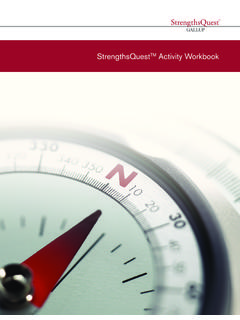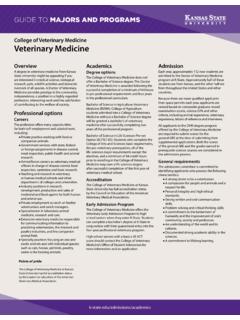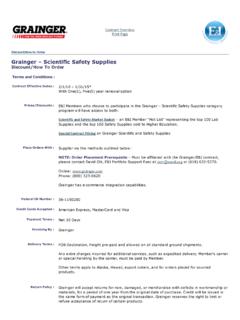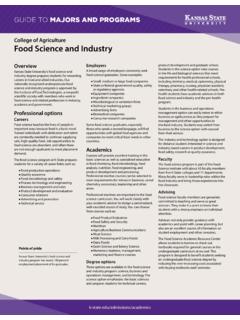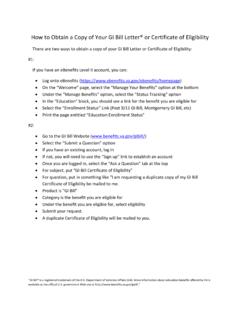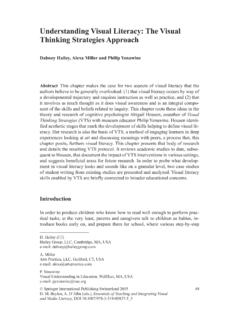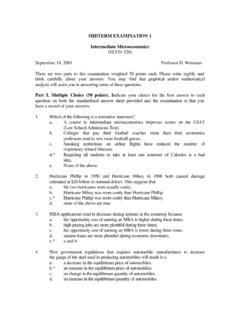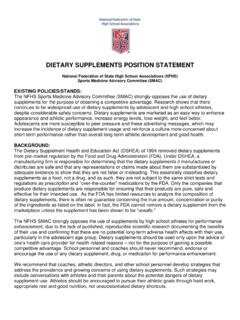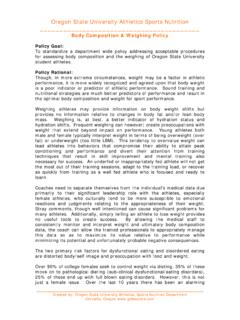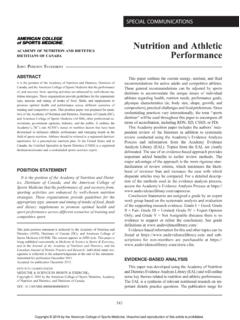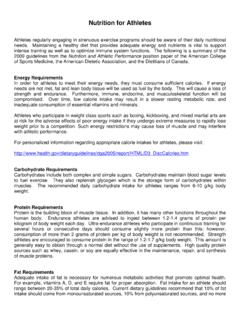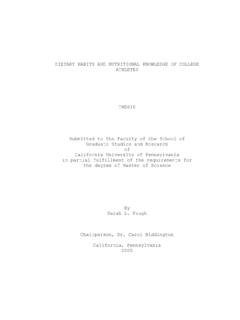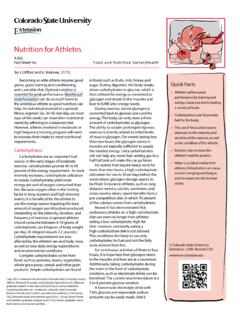Transcription of How do I eat to improve athletic performance
1 How do I eat to improve athletic performance ? Proper nutrition is imperative to obtaining optimal athletic performance . The following describes how an athlete figures his or her carbohydrate, protein, fat and fluid needs. Carbohydrate Needs Carbohydrates are important to maintain blood-glucose levels during exercise and replace muscle glycogen. The recommendation of the American Dietetic Association is 6-10 g of carbohydrates/kg body weight per day. The amount required is based on the athletes sex, total daily expenditure, and environmental conditions. For example a male athlete would aim for the higher end (8-10 g/kg) because males have higher energy needs. Follow this example to learn how to figure your calorie needs; Deb is a cross-country runner. She weighs 124 pounds. Based on the fact that she is a female endurance athlete, her carbohydrate needs are around 7 g/kg body weight.
2 How many grams and calories from carbohydrates should she be getting per day? 1 gram of carbohydrate = 4 calories (124 pounds)/( ) = kg (7 g/kg)( kg) = 395 grams of carbohydrate per day (395 g)(4 cal/g) = 1580 calories/day from carbohydrates Protein Needs The athlete has slightly increased protein needs than the average person. Extra protein is needed to build and repair muscles during and after exercise. Needs of an endurance athlete are g/kg, and for a strength training athlete as high as g/kg. Example: Derek is training for his 4th triathlon. He weighs 172 pounds. His protein needs are g/kg. How many grams and calories from protein should he be getting per day? 1 gram of protein = 4 calories (172 pounds)/( pounds/kg) = kg ( g/kg)( kg) = 94 grams ( g/kg)( kg) = 109 grams 94-109 grams of protein per day (94 g)(4 cal/g) = 376 calories (109 g)(4 cal/g) = 436 calories 376-436 calories from protein per day Fat Needs Fat is important because it provides energy and helps metabolize fat-soluble vitamins.
3 Lipid needs of the athlete are similar to those of non-athletes. ADA recommends 20-25% of a days calories be consumed from fat. There is little scientific evidence that suggests a diet lower than 15% fat enhances athletic performance . Example: Denise is a cyclist who consumes 2200 calories per day. If 20-25% of her days calories come from fat, how many calories and grams of fat does she need per day? 1 gram of fat = 9 calories 2200 calories(.20) = 440 calories 2200 calories(.25) = 550 calories 440-550 calories per day from fat (440 calories)/(9 cal/g) = 49 (550 calories)/(9 cal/g) = 61 49-61 grams of fat per day Fluid Needs During exercise fluids are lost through perspiration and respiration. Dehydration decreases athletic performance and fluids should be consumed before, during and after exercise. If an exercise lasts longer than 90 minutes, the athlete may benefit from consuming a sports beverage like Gatorade or Powerade for electrolyte replacement.
4 ADA recommendations are as follows Before exercise: 14-22 ounces During exercise: 6-12 ounces every 15-20 minutes as tolerated After exercise: 16-24 ounces for every .5 pounds lost during exercise Example: Terry spent 3 hours rock climbing today. He paused for a drink every 20 minutes. Through the course of his exercise he lost 1 pound. Approximately how much fluid should he have consumed in ounces and cups? 1 cup = 8 ounces Before exercise: 14-22 ounces During exercise: (6 ounces)(9-20 minute periods) = 54 ounces (12 ounces)(9-20 minute periods) = 108 ounces After exercise: (16 ounces)( pounds lost) = 32 ounces (24 ounces)( pounds lost) = 48 ounces 14 + 54 + 32 = 100 ounces 22 + 108 + 48 = 178 ounces 100-178 ounces of fluid (100 ounces)/(8 ounces/cup) = cups (178 ounces)/(8 ounces/cup) = cups cups of fluid From ADA: nutrition and athletic performance Journal of ADA

